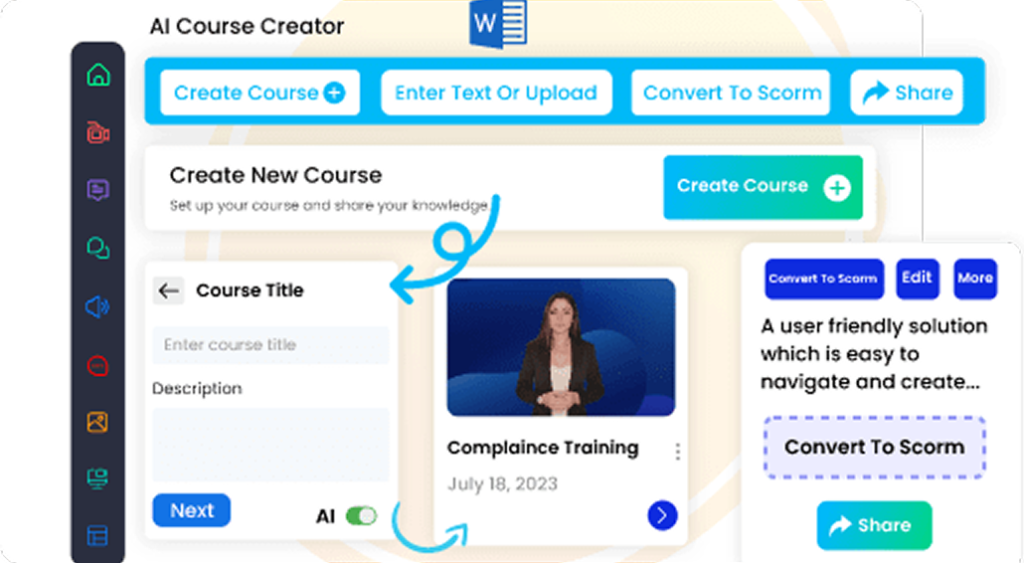Mastering Presentation Skills for Employees: A Complete Guide
Effective presentation skills are fundamental for employees across all industries. Whether pitching new ideas, leading meetings, or engaging clients, the ability to communicate confidently and clearly enhances professional credibility and ensures messages are understood. This comprehensive guide highlights the core components of impactful presentation skills, focusing on key techniques such as articulate speech, well-structured content, and confident body language. By emphasizing these areas, employees can develop the assurance and competence needed to deliver compelling presentations that leave a lasting impression. Improving these skills not only boosts individual career growth but also positively impacts organizational communication and success.
Today’s workplace demands strong presentation capabilities. Effective communication encompasses both verbal and non-verbal cues, the organization of your message, and your engagement with the audience. Creating a presentation for training is a vital part of this skill set, helping professionals convey information clearly and persuasively in learning environments. According to the National Center for Biotechnology Information, excellent communication skills are linked to better team collaboration, leadership development, and career advancement [1]. As such, honing presentation skills is a strategic investment in professional development, leading to enhanced clarity, increased influence, and a reputable presence within your organization. Employers increasingly value these competencies during hiring and promotional considerations, underscoring their significance for career progression.
Presentation skills training for employees focuses on three core pillars: clear speech, structured content, and confident body language. Each of these elements plays a vital role in enhancing communication and ensures that the message resonates effectively with the audience. This type of training helps employees develop the ability to deliver engaging, persuasive, and professional presentations. By mastering these components, employees are better prepared to handle a range of presentation scenarios—whether it’s delivering reports, leading meetings, or conducting training sessions—ultimately contributing to both organizational growth and their personal success.
Understanding the Significance of Presentation Skills in the Workplace
Presentation skills training for employees goes beyond simply improving their speaking abilities—it cultivates a blend of speech clarity, effective content organization, and confident body language. According to Harvard Business Review, these skills significantly influence perceptions of leadership, authority, and trustworthiness [3]. When employees excel at presenting, they are better positioned to influence decision-making processes, foster team cohesion, and drive organizational initiatives. Clear, organized communication enhances credibility, persuades stakeholders, and facilitates understanding, making it a vital competency for professional advancement.
Effective presentation skills empower employees to articulate ideas with precision, enhance their professional reputation, and improve workplace interactions. Organizations that prioritize communication skills tend to experience higher productivity and collaboration levels. Consequently, employees who continually develop their presentation capabilities are better equipped to influence outcomes and foster positive workplace dynamics. As communication becomes increasingly vital in the digital age, cultivating these skills is essential for maintaining a competitive edge and ensuring organizational success.
Core Elements of Effective Presentation Skills
The foundation of an impactful presentation hinges on three primary components: clear speech, well-organized content, and confident body language. Each element is vital for ensuring your message is delivered with clarity, professionalism, and engagement. By mastering these areas, employees can confidently communicate ideas, persuade audiences, and leave memorable impressions.
Clear Speech: The Foundation of Effective Communication
Why Clarity Matters
Clear speech is essential for ensuring your audience understands your message without confusion. Research shows that speech clarity significantly influences comprehension and retention. Using a strong, steady voice, articulating words distinctly, and speaking at a moderated pace contribute to effective verbal delivery. Practicing projection techniques and articulating carefully help in delivering your message confidently.
Practical Techniques for Clear Speech
- Project Your Voice: Use diaphragmatic breathing to produce a steady, strong voice.
- Enunciate Words: Pronounce words slowly and distinctly to prevent misunderstandings.
- Moderate Your Pace: Maintain a steady speaking speed; avoid rushing or sluggish delivery.
- Pause Strategically: Use pauses after important points to emphasize and allow audience processing.
Regular practice, recording your sessions, and seeking feedback can greatly improve speech clarity, ensuring your audience is engaged and comprehends your message.
Structured Content: Organizing Your Message Effectively
Why Structure Matters
Organized content makes it easier for your audience to follow your message. An unstructured presentation can cause confusion and reduce engagement. Logical sequencing—such as problem-solution, chronological, or cause-effect—helps in guiding your audience effortlessly through your key points.
Strategies for Structuring Content
- Start Strong: Capture attention with a compelling opening, question, or fact.
- Present Clear Main Points: Use a logical order to develop your ideas.
- Support with Evidence: Incorporate data, anecdotes, and visuals.
- Finish with Impact: Summarize key messages and include a call to action.
Using visual aids strategically and rehearsing with them ensures seamless integration, enhancing clarity and audience engagement.
Confident Body Language: Building Presence and Credibility
Why Body Language Is Crucial
Non-verbal cues like eye contact, gestures, and posture significantly influence how your message is perceived. According to Harvard Business Review, confident body language correlates with perceptions of authority and trustworthiness [3]. Maintaining eye contact fosters connection, natural gestures emphasize points, and an upright posture exudes confidence. Purposeful movement and genuine facial expressions align your non-verbal cues with your message, reinforcing credibility.
Practicing body language through video recordings and coaching can enhance your delivery. A well-composed posture and expressive gestures boost audience engagement and reinforce your spoken words, making your presentation more memorable and impactful.
Discover how our courses can align with your training goals and drive real results.
Learning Built Around Your Goals.
Schedule A DemoStrategies to Enhance Presentation Skills Through Practice and Feedback
Consistent practice coupled with constructive feedback is essential for refining presentation skills. Setting regular rehearsal routines and seeking honest evaluations accelerates improvement and builds confidence. Recording practice sessions allows you to observe body language, tone, and pacing, helping identify areas for refinement.
Effective Practice Tips
- Simulate Real Settings: Rehearse in environments similar to actual presentation venues.
- Time Yourself: Ensure your presentation fits within designated time limits.
- Record and Review: Observe your delivery critically for strengths and areas to improve.
- Experiment with Styles: Try different delivery approaches to discover what works best.
Leveraging Feedback for Growth
- Solicit Honest Opinions: Ask colleagues or mentors for constructive critique.
- Implement Suggestions: Prioritize actionable feedback in subsequent rehearsals.
- Track Progress: Monitor improvements over time to boost motivation.
Dedicated practice and receptive feedback foster continuous development, transforming tentative speakers into confident orators.
Addressing Presentation Anxiety and Building Confidence
Many employees face nervousness before or during presentations. Managing anxiety is vital for delivering a confident, clear message. Strategies include powerful preparation, relaxation techniques, and positive visualization.
Practical Techniques to Reduce Nervousness
- Thorough Preparation: Know your material inside out to minimize uncertainty.
- Relaxation Exercises: Deep breathing and progressive muscle relaxation help calm nerves.
- Positive Visualization: Imagine a successful presentation to foster confidence.
- Focus on Content, Not Yourself: Concentrate on how your message benefits the audience.
On-the-Day Confidence Boosters
- Arrive Early: Familiarize yourself with the environment to reduce stress.
- Use Power Posing: Adopt open posture before stepping up to enhance feelings of confidence.
- Control Breathing: Maintain calmness through slow, deliberate breaths.
- Engage Audience: Establish eye contact and ask questions to connect and build rapport.
Consistent use of these techniques over time helps employees overcome nervousness, craft authentic delivery, and confidently engage audiences.
Tools and Resources to Support Continuous Improvement
Organizational commitment paired with the right tools accelerates skill development. Resources include workshops, online courses, books, coaching, and AI-powered feedback platforms. For example, AI platforms like Cognispark provide personalized feedback, video analysis, and progress tracking, making ongoing training practical and engaging.
Participation in professional organizations such as Toastmasters can also foster peer learning, structured feedback, and confidence-building. Regularly updating training materials with the latest techniques and leveraging digital tools helps sustain momentum and continuous growth in presentation skills.
Final Thoughts: Elevating Your Communication Ability
Developing effective presentation delivery takes dedication, practice, and openness to feedback. Through structured presentation skills training for employees, individuals can master the use of voice, body language, pacing, and anxiety management—transforming them into compelling communicators. Consistent effort, utilizing available resources, and seeking constructive critique foster ongoing improvement, ultimately empowering employees to engage audiences with confidence and clarity. This growth not only enhances individual careers but also strengthens organizational communication overall.
Next steps include recording your presentations, analyzing your delivery, actively seeking feedback, and practicing regularly. Embrace continuous learning, and your presentation skills will evolve into a powerful tool for professional success and organizational impact.
Explore Our eLearning Course Catalog
Access 100+ fully editable, SCORM-compatible courses featuring an integrated AI Tutor and an in-built authoring tool. Seamlessly compatible with any LMS, these courses are designed to elevate your training programs.
Explore Course Catalog























